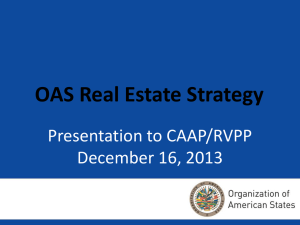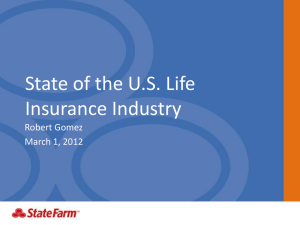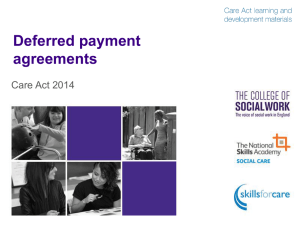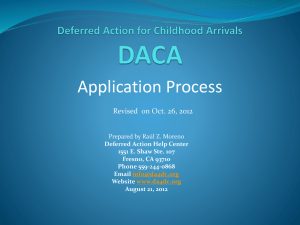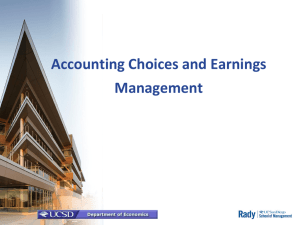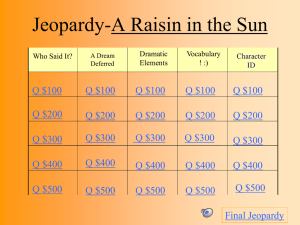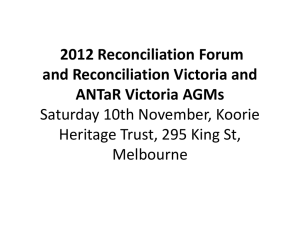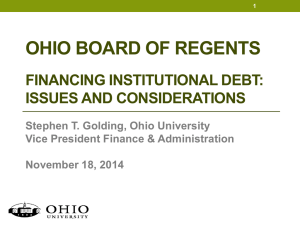International and Global Oracle Implementations
advertisement
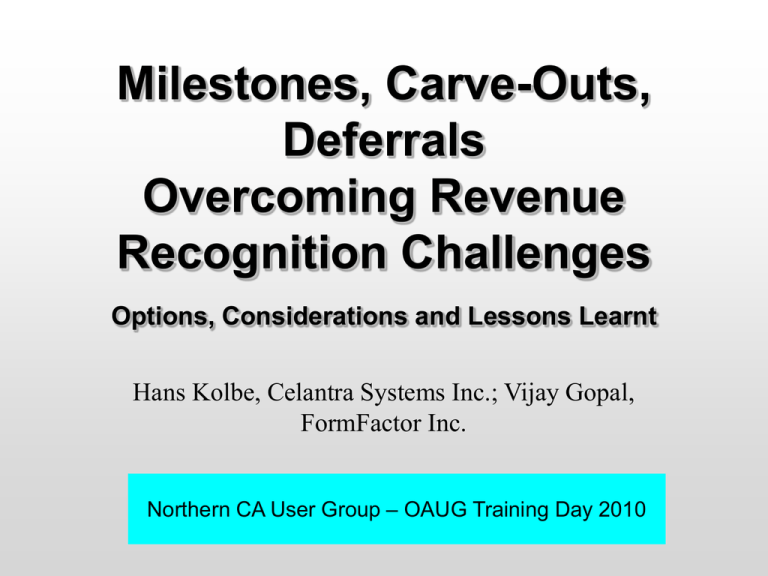
Milestones, Carve-Outs, Deferrals Overcoming Revenue Recognition Challenges Options, Considerations and Lessons Learnt Hans Kolbe, Celantra Systems Inc.; Vijay Gopal, FormFactor Inc. Northern CA User Group – OAUG Training Day 2010 Celantra Systems: Celantra Systems provides international program management services with a strong focus on multi-org, inter-company, global compliance and implementation issues. The key element in our approach is the alignment of operational efficiency, legal/tax compliance and management reporting. Our goals are: - Single global structure across country, currency, language, accounting and tax regime - Variations are transparent to operator and business user community - Flexibility for business growth, acquisitions, or other changes in business or legal model - Ease of support and upgrade Former and current clients include Terex, UPS, Xerox, Tektronix, British Telecom, Assa Abloy, Yahoo, Texas Instruments, PPG, Dionex and others. Hans Kolbe has managed and advised software implementation projects for over 15, global projects for over 10 years. His extensive knowledge on Oracle applications is combined with a formal background as a German attorney, trained in international and comparative law. Contact: e-mail hanskolbe@celantrasystems.com Phone: + 1 (415) 730 - 1131 Topics 1. Challenges and Objectives in Revenue Recognition automation 2. Flexible Milestones Rule Automation 3. Revenue ‘Carve-Out’ Requirements and Solution Detail 4. Lesson Learnt Current Business Model - Client – located in Northern California - supplies high-tech and semiconductor manufacturers with critical high value testing instruments and support structure. This includes customized configurations, installation, training, support, and repairs. - Currently all production and product shipment made from California. Repair and service facilities exist in many Asian and European countries. - Key Asian customer countries are: Korea, Japan, Singapore, Taiwan, China - Oracle E-Business Suite with complete MFG and Financials as well as CRM Service and Depot Repair implemented in the US only. International entities report operational results in GL journals only. Revenue Recognition Challenges in Multi-National Environment BUSINESS REQUIREMENTS: Deferred Revenue and its Impact on Statutory Profits: *Future undelivered product (free goods) *Future undelivered service (service contracts) *Fees that will refund to customer based on future activity (NRE volume discounts) *Collectability *Customer acceptance provisions or functionality promises on delivered product *Confirmation of final end-user (recognize on sell through, not sell-in) *Insufficient evidence of arrangement (CRD reschedule documentation or referenced exhibits not finalized) Revenue Recognition Challenges COGS IMPACT: Deferred revenue related to undelivered product or service requires no COGS deferral as the COGS are not yet incurred. Deferred revenue related to fees that will refund and collectability require no COGS deferral because deferred costs do not meet the definition of an asset Deferred revenue related to acceptance provisions, sell-through confirmation and insufficient evidence would result in a deferral of COGS. Revenue Recognition Challenges Current Status: - All Revenue Recognition and COGS Adjustments are done in manual adjustments at month end. - Deferred Revenue is entered as AR Adjustment. - Deferred COGS as GL Journal. Business Requirement: - Automation of Rev Recognition to support Shared Services - Speed up month end close. - Provide easy reconciliation with Deferral of COGS - Forecasting of Revenue Deferral - Easy audit and reconciliation of Deferred and Recognized Revenue Revenue Recognition Challenges Current Status: - All Revenue Recognition and COGS Adjustments are done in manual adjustments at month end. - Deferred Revenue is entered as AR Adjustment. - Deferred COGS as GL Journal. Business Requirement: - Automation of Rev Recognition to support Shared Services - Speed up month end close. - Provide easy reconciliation with Deferral of COGS - Forecasting of Revenue Deferral - Easy audit and reconciliation of Deferred and Recognized Revenue Oracle Functionality Challenges Fixed Length Revenue Recognition – Service Contracts: • Functionality sufficient Milestone Revenue Recognition: • Accounting Rule without fixed recognition date? • How to identify the critical event and integrate? • How to setup multiple milestones for related order lines and partial recognition Carve-Outs – Revenue Deferral and Re-Allocation: • Free Goods • Free Services • Future Volume Discounts • Waiver for Fees Implementation – Solution Elements Fixed Length Revenue Recognition: Business Cases: - Service Contracts - Payment Schedule Tie-In Solution: Create Accounting Rules for the various pre-determined schedule (2yrs, 3yrs, 1yr) and amounts. For Service Contracts it is possible to create specific items with attached revenue recognition rules. (this eventually was not used, because too many combinations of type and length of service would be created) Implementation – Solution Elements Milestone Revenue Recognition: Business Cases: - Customer Acceptance (no fixed date) - Certification of product (no fixed date) - Collection Risk (tie to future payment – no fixed date) Challenge: Oracle needs revenue recognition date to create accounting rule. How to avoid creating accounting entries for the future recognition date. These need to be manually unscheduled when the recognition event occurs. Solution: Accounting Rule record carries a flag “deferred“. If this is checked, then no future date records are created. This way no un-scheduling is required. Revenue Recognition can be scheduled as events occur. Partial scheduling is available (percentage or amount). Note: Special case for milestone rules when related or bundled order lines are involved. Implementation – Solution Elements Carve Outs and Revenue Recognition: Business Cases: - Free Goods - Free Services - Future Volume Discounts - Waiver for Fees Definition: Product accessories, design or installation fees, service contracts are included in product price, i.e. bundled. No separate charge is made. These related order lines carry costs and must generate separate revenue (service revenue etc.). The revenue must be ‘carved-out’ from the main product revenue. This revenue re-allocation must follow the revenue recognition rule of the main product. Implementation – Solution Elements Carve Outs and Revenue Recognition: Oracle Challenge: - No automated mechanism to apply revenue re-allocation from related order lines. - No automated mechanism to apply rev rec rule to a group of order lines. Solution Design Elements: - Create Parent and Child Order line relationships - Create data elements to maintain the ‘carve-out’ amounts or percentages - Build A/R interface preprocessor to generate additional ‘internal accounting invoices’ to execute revenue reallocation and ensure synchronized recognition - Order Entry Control Reports, Forecasting and Reconciliation Reports Revenue Carve–Outs – Detail Setups Parent/Child Relationship for Order Lines: Grouping DFF with 2 segments: a) Set No – to separate multiple sets on the same sales order b) Parent or Child – only 1 parent but unlimited children per set allowed. Maintain ‘Carve-Out’ Amounts or percentages: Additional segment DFF contains amounts or percentages as required. This is used on the dependent children lines and allows the original order sales price to remain as Zero for bundled items. A/R Interface Preprocessor: Additional ‘internal accounting invoices’ are created in the A/R Interface. These invoices reduce ‘parent’ revenue and allocate revenue of dependent children lines according to the required amounts. Separate invoice source used, so invoices do not print and are not included on customer statements. Reports: Revenue forecast, order entry control and reconciliation reports are created. Revenue Carve–Outs – Detail Setups Screen Shots Following – Partial - Revenue Recognition on Bundled and Carve-Out Sets (excel model) Deferred Revenue Reconciliation Report Deferred Revenue Forecast Inv Number Inv Lin e Nu m Ord er Line Nu m In v Qt y Unit Selling Price Item Num P a r e n t C hi ld R5210 A P 1 N/A 7300001 C 1 NRE C R5210 A C 7300001 C 10102518 1 1.1 1 58,000. 00 10102518 5 8.1 1 0.00 10102518 2 2.1 1 10,000. 00 10102518 3 3.1 1 0.00 Par ent Chi ld Grp Appl Meth od Accou nting Rule Def Re v Acc t Proj Rev Calc Amt Functiona l Amt Recogniz ed Amt Deferred Amt 51,260.00 58,000.00 51,260.00 0.00 PERCE NT 0.00 0.00 0.00 0.00 1 VALUE 10,000.00 10,000.00 10,000.00 0.00 1 VALUE 0.00 0.00 0.00 0.00 Deferred Revenue Control Report - Reconciliation 10102518 4 4.1 1 0.00 1 PERCE NT 0.00 0.00 0.00 0.00 Forecast – Deferred Revenue – Order Entry Control Lesson Learnt • • Revenue Recognition parameters were moved to Order Entry from Month-End finance. Therefore stronger Integration of Order Entry and Customer Service Process recommended. Additional complexities with exception process need to be addressed: • • • • Order Changes and Cancellations FX treatment in parent/child sets Forecast and Reconciliation Reporting needs stronger emphasis Prototyping and Faster Development cycle will enhance meaningful user participation Thank you ! Hans Kolbe, Celantra Systems hanskolbe@celantrasystem.com + 1 (415) 730 - 1131
